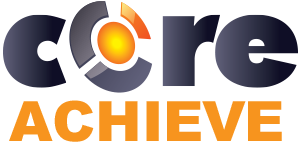Using a LMS for Remote Employees
March, 21 2023
Other posts:
Enhancing Team Dynamics for Effective Group Decision-Making with LMS Integration
Organizations increasingly rely on collaborative efforts to solve complex problems, innovate, and adapt to change, but how do we ensure that collaboration is happening.
Maximizing Small Business Potential with Training Technology
Training technologies can push small businesses ahead of their competitors, but what are the factors that go into choosing the right technology?
Unlocking Employee Potential: The Transformative Benefits of an Interactive Learning Management System (LMS)
Interactive training allows for unlocking employee potential, but how is it done?
Building a Robust Sales Pipeline with Training
Every organization wants a streamlined sales pipeline, but building one requires a series of interlocking activities with one of the most important being training.
Strategies for Adapting In-Person Training to Online Platforms
Online training is one of the most flexible ways of delivering training across organizations, but how do you even begin to adapt in-person training into online?
Remote work is already a new norm, but training remote employees has still been a problem. However, it doesn't have to be.
Remote working is quickly becoming the new norm; yet, training remote workers is subject to many inconsistencies, like time differences, connection problems, and natural variance in training.
Using a Learning Management System (LMS) to train remote employees can nullify many—if not all—of the inconsistencies affecting remote training.
Benefits of a LMS for Remote Training
Learning Management Systems provide a training platform that is adaptable to most situations and, given that remote workers could be anywhere in world, this makes a LMS essential to deliver high-quality remote training. Using a LMS to train remote employees has these benefits:
Accessible Anytime
Whenever dealing with remote employees, scheduling on the same time can be difficult, but with a LMS the courses are accessible anytime. There needs be no scheduling conflicts or inconvenient timings because the learner can begin learning on their own time.
Consistency in Material
Courses in a LMS will not change from one training session to another, which means the same material will reach all of your remote employees. Where as having an instructor deliver the same material over multiple sessions can and will lead to natural variations in the content.
Flexibility with Content and Completion
Remote learners can complete courses on their own time, but that was already touched on earlier. With a LMS updates to content will automatically be pushed to everyone in the system, making training not only more flexible but, again, more consistent.
More Interactive Training
A LMS has interactive elements to the training as well, like quizzes, surveys, and discussions. Not only does this encourage a more engaged approach than pure lecturing, but it also always the instructors of courses to collect analytics and gauge how effective their approach is.
Scales with the Organization
As more remote employees join the organization, more trainers will be needed and that can quickly become too costly or overbearing. A LMS, however, can scale up or down with any organization as demand requires.
Choosing the Right LMS for Remote Training
Some Learning Management Systems are designed to be used for more in-house training, so it’s important to look for these traits when using a LMS for remote training.
Simple User-Interface
Since a LMS allows for remote employees to train on their own time, it is important to choose a LMS that has an intuitive user interface as it reduces the barriers to learning. Remote employees mostly likely will not have someone to immediately help if they get lost in the interface.
Accessible from the Web
There should be no downloads or equipment required (besides a computer) for a learner to be able to complete training. This reduces the barrier of entry but also reduces the potential number of problems one might have with acquiring and using the required equipment.
Provide Support
While there are many benefits to using a LMS to train remote employees, some learners could have trouble with the system. As such, the organization should provide support timely or pick a LMS that will give support directly to the learners themselves.
Capture Analytics
Given that employees can be training on their own, opt for a LMS that captures data about their progress and what they are doing in the system. This will provide insights into what and how the remote learners are doing.
A LMS Makes Remote Training Easier
Regardless of time or place, using a LMS for remote training will make that training not only easier but more efficient. Remoting training raises many challenges like time that can be remedied by using a LMS as it provides more flexibility with more consistency.

Leave comment: